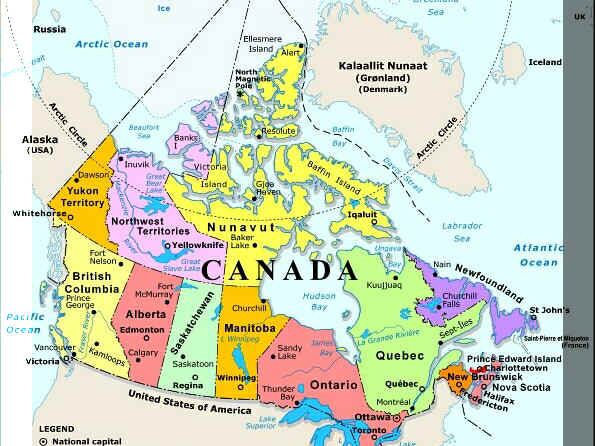BUSINESS START-UP VISA PROGRAM

About Canada
Canada is one of the world's most desirable country to live in. In 2016, it was ranked number one on the list! As the world's second largest country, Canada covers an area of 10 million square kilometres, but the population is only about 33 million. It has huge economic potential, a good climate, environment and quality of life. In addition, it has very good social welfare, education and medical systems. Hence, Canada has become the world's most stable, friendly and suitable country for migrants. Canadians are down-to-Earth, friendly and warm, welcoming immigrants, investment professionals and students of different nationalities. Excellent education and democratic system embrace multicultural and multi-ethnic customs, bring unlimited business opportunities for new immigrants and help them achieve their personal dreams.
Geography of Canada
Canada is located in the middle of the Pacific and the Atlantic Ocean, in the north of the United States. The Rockies cross the northern British Columbia to the southern United States; 30% of the land belongs to the plains. There are no natural disasters such as hurricanes and tornadoes in the United States. And in the northern hemisphere near the Arctic Circle, in the winter it has a beautiful snow scenery. Canada's major cities are close to major US cities such as New York, Boston, Philadelphia, Detroit, Chicago, Seattle and so on, so it has easy access to North American free trade, tourism and consumption. Canada has 10 provinces and 3 regions, there are countless lakes and rivers, more than half of the area are covered by forests and glaciers, and the underground contains a lot of mineral resources. Canada's east and west coast of Highway 1 is the world's longest national road, about 7604 km.


Canada's Industry, Farming, and Natural Resources
Canada's industrial and natural resources divisions are located in different regions. Eastern Ontario, Midwest Alberta is an industrial area (Calgary is a highly industrial city). Alberta also accounts for 75% of Canadian crude oil production, as well as coal and natural gas. While Western British Columbia is the region for trade and tourism (Vancouver is an important international trade port).
Canada's natural resources include nickel (mainly from Ontario), zinc, potassium, uranium, sulfur, asbestos, aluminum and copper, and hydropower, pulp and paper. In addition, the agricultural and grazing industry is in the prairie provinces (Alberta, Saskatchewan and Manitoba), which produce and export a large number of high quality agricultural and pastoral products to the rest of the world.
Canada's Education System
Secondary schools in Canada generally starts from the seventh or eighth grade to the 12th grade. All secondary schools are open to overseas students, but most of them have an upper age limit. The school will arrange for students to stay in an authorized and screened local host family while some schools have their own dormitory, so there is more flexibility. Students must complete the 12th grade to apply for University, and local universities is mainly based on the student's high school performance and provincial examinations as the standard of admission. After entering high school, there will be career planning teachers to guide students in the direction and development of career goals and, early development of students' professional and interest awareness.
In addition to the general certificate and diploma courses, some Canadian colleges offer intensive English courses, high school and university diplomas. As the maximum age for admission to government secondary schools is 19 years old, students who are close to or over 18 years of age in secondary schools may choose to enroll in private secondary or post-secondary programs. The duration of the program ranges from one to three years. Some specialist diplomas allow immigrants to apply for work visas after several months of work experience.

